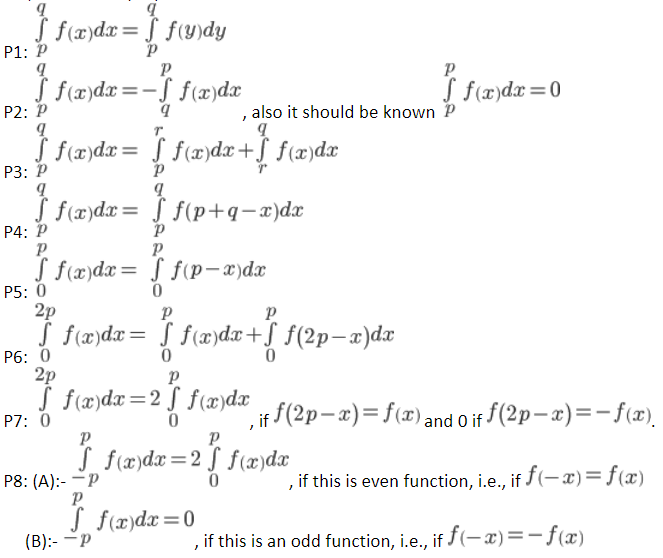Differential Calculus is targeted at the idea of the by-product. The unique motivation for the by-product was the trouble of defining tangent traces to the graphs of capabilities and calculating the slope of such traces. Integral Calculus is prompted with the aid of using the trouble of defining and calculating the vicinity of the location bounded with the aid of using the graph of the capabilities. Assume an interval I in which a function f is differentiable, i.e., its by-product or derivative f’ exists at every factor of I, then a verbal question arises that given f at every factor of I, are we able to evaluate the function? The capabilities that might likely have given a feature as a by-product are known as antiderivatives (or primitive) of the feature. Further, the formulation that gives a lot of these anti derivatives is known as the indefinite integral of the function and such manner of locating anti derivatives is known as integration. Such issues arise in many sensible situations. Following two types of the problems are solved in order to calculate the integrals:
- Derivative is given, find the function of for the given problems.
- Certain constraints are given for which area needs to be evaluated for the covered area in the graph.
From the above two types of problems, theory of Integral Calculus is divided in two parts i.e., Definite Integrals and Indefinite Integrals. Fundamental Theorem of Calculus acts as a binding for both types of integrals i.e., Indefinite and Definite integrals. Although in the fields of engineering and science, definite integrals is a practical approach for solving all such problems.
Definition
In this section, we are going to dive deep into definite integrals and learn its importance. Definite means limited or a small defined region with some constraints. This type of integration is done for a region with defined limits or boundaries. The area covered by such type of region is also finite.
A definite Integral is represented as:
. In this, ‘a’ and ‘b’ represent the lower and upper limit of the integration function.
Types of Solution of Definite Integrals
This type of problems can be solved with the help of two methods which are:
- Solution by limit of sum of a definite integral problem
- Solution with the help of anti-derivation of a definite integral problem
Let’s look at the examples for both cases:
Definite Integral by LIMIT OF SUM.
Example 1:
Solution:
,
Here, a = 0, b = 2, , and
By solving the same, we get as a final result.
Now, before going to evaluate the second type of problems of definite integrals, we need to understand the “Fundamental Theorem of the Calculus.”
Fundamental Theorem of the Calculus
In this theorem, the integral functions are defined for specific-regions. For example, the given function have boundaries which is defined by the region
, and the ordinates are a and b of the x-axis and also the x-axis. So, the area covered under the region y is the function of x which is also called the Area of function.
Based on the area of function, two theorems are derived, which are as mentioned below:
Theorem 1: Let f is a continuous function, which is closed under the constraints [p, q], and let A(y) is the area function.
So, the integral equation becomes as follows:
, for all y belongs to the region defined in [p, q].
Theorem 2: This uses the concept of anti-derivative which states that,
Let F is a continuous function which is closed under the constraints [p, q] and F is the anti-derivative of f. Then the integral equation becomes as follows:
Now, let us go through an example:
Example 2:
Solution: Integrating the function f(y)dy, we get
By Theorem 2, F(3) – F(2) = , is the final result.
Conclusion
From the above topic, we clearly understood the definition of definite integral which states that the area covered under a defined constraints and that should be finite too. This is a branch of integral calculus, which has different solving patterns for different types of integral problems. One is the definite integral which we already discussed and the other one is the indefinite integral. In definite integral, there are two patterns available for solving the problems. Either by limit of sum or by area of function. There is one more method to solve definite integrals i.e., by substitution in which a predefined integration solution is inserted in the integral problems.
 Profile
Profile Settings
Settings Refer your friends
Refer your friends Sign out
Sign out







